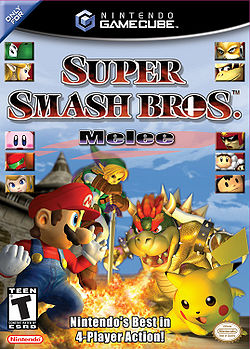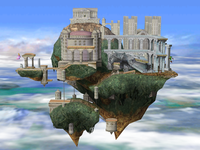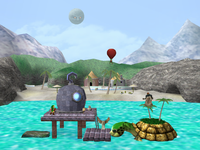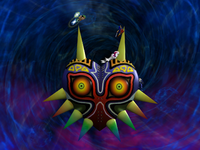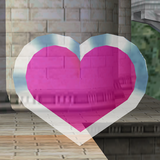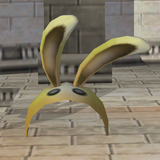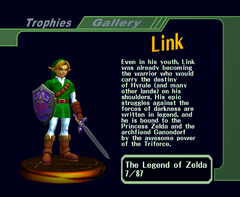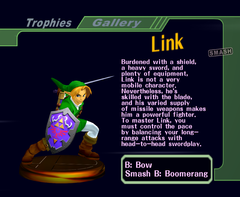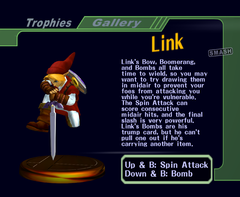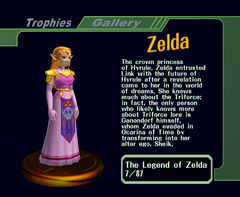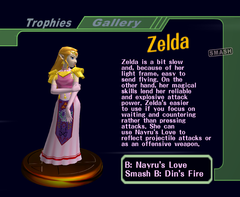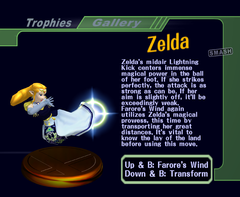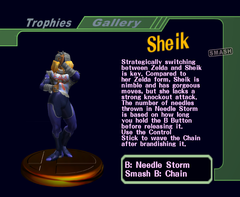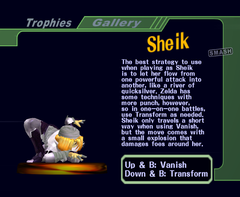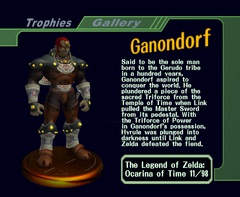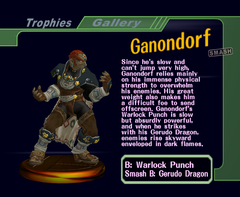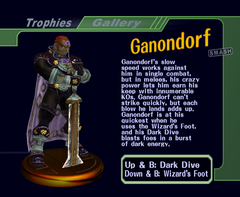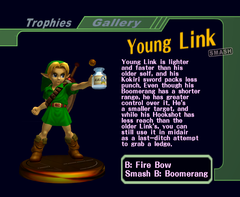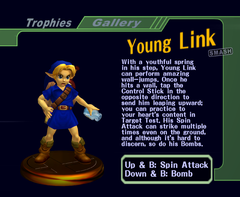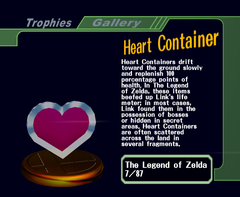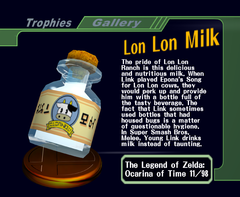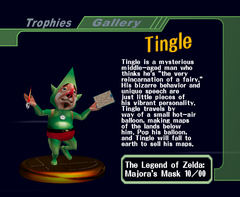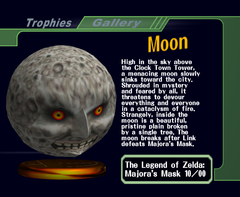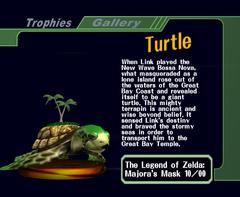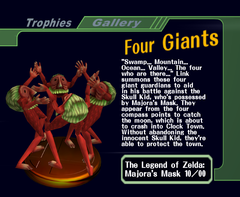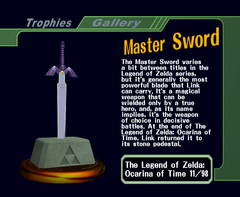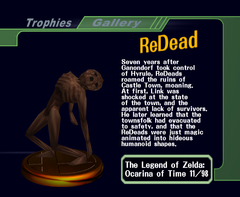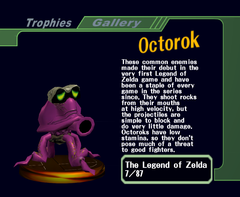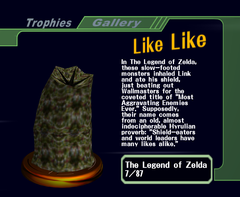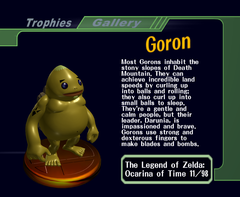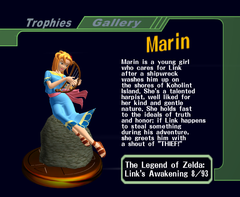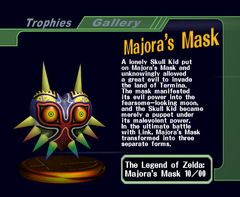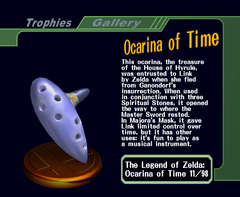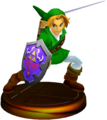Super Smash Bros. Melee
| This article describes a subject that is or may be outside the core Zelda canon. |
Previous | ||
Next | ||
| Release | ||
|---|---|---|
Platform | Date | |
| Credits | ||
Developer | HAL Laboratory | |
Director | Masahiro Sakurai | |
Super Smash Bros. Melee is the second game in the Super Smash Bros. series. It has 25 characters and many more stages than its predecessor. The game introduces the idea of trophies into the series. Several series are represented in the game and The Legend of Zelda is one of them. There are four/five characters to represent the series along with two stages, many trophies and a few items.
Zelda Characters
Link
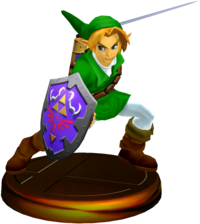
- Main article: Link
Link is based on Adult Link in Ocarina of Time. His special moves are the Spin Attack, Bow, Boomerang and Bombs. Link's recovery can be very predictable and his high falling speed and weight make him a good target for grab + combos, but the Spin Attack is a brilliant partial spike in the NTSC version of the game.
Princess Zelda
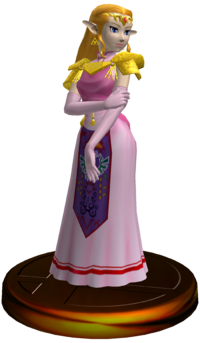
- Main article: Zelda
Zelda is based on Adult Zelda in Ocarina of Time. Her special moves are Nayru's Love, Farore's Wind, Din's Fire and Transform (which is turning her into Sheik). Zelda's main problem is her movement ― she has the worst dash speed out of all the characters ― but her Lightning Kick is a great killer move and all her other main attacks are very powerful as well.
Sheik
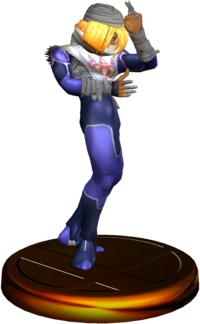
- Main article: Sheik
Sheik is based on her character model in Ocarina of Time. Her special moves are Needle Storm, Chain, Vanish and Transform (which is turning her into Zelda). Sheik's chain grab, excellent combos and brilliant finisher forward air make her one of the best characters to edge-guard with; however, her recovery is quite predictable/short and her wave-dash is very short yet fast.
Young Link
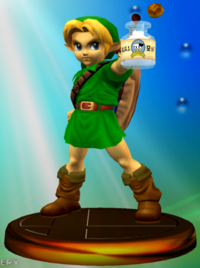
- Main article: Young Link
Young Link is the only character not fully based on his Ocarina of Time model, as his Majora's Mask model. His special moves are the same as Link's, but Young Link uses Fire Arrows instead of just regular arrows. Young Link has 3 projectile attacks, which gives him a great advantage for combos and edge-guarding, but he does have problems KO-ing as none of his moves inflict that much damage.
Ganondorf
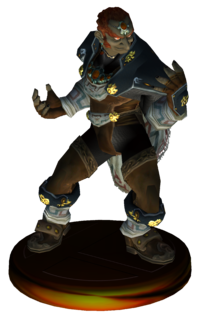
- Main article: Ganondorf
Ganondorf is based on his Ocarina of Time model, but everything about him is taken from Captain Falcon's in-game model; from the moves to the idle animations. His specials are the Warlock Punch, Gerudo Dragon, Dark Dive and Wizard's Foot. Despite being a clone of Captain Falcon, Ganondorf is slower and more powerful. He has a good reach, great power and one of the best aerials in the game; but he is easily kept down by fast moves and being so susceptible to combos and chain grabs keeps him from being a better character overall.
Zelda Stages
Temple
Temple is speculated to have been based on the Temples in The Adventure of Link (which is reinforced by the main music, which is the same song). It is a very large stage (which makes it so hated by 'serious players' of the game) with so many different platforms to jump on and hide with. Some players find it more fun to run away from the other players instead of fighting. It is also very popular with edge-guarders as there are so many edges to grab onto.
Great Bay
The Great Bay stage is based on the Great Bay Coast area from Majora's Mask. The main battle stage is actually the Marine Research Lab, which has been turned so that the platform at the front of the Lab is faced toward the entrance to Zora Cape. The Turtle also pops up from time to time on the right side of the stage, but it will go back under the water after a few seconds. There is also a random platform that tilts when players stand on it that is not in the original game.
The whole stage is surrounded by water, and since there is no swimming in the game, any player that falls into it is most likely going to be KO'd unless they try to save themself. There are some minor modifications to the background, but nothing really significant. Also in the background, is a small animation of the Moon coming closer to the stage, then the Four Giants will walk in and push the Moon back to its original position. The Giants then leave by walking off in four seemingly random directions as one should come straight toward the stage, but not one does. The Moon will never fall back down toward the stage after the Giants push it back up.
Majora's Mask
The Majora's Mask stage is one stage that can be fought on in the Event Mode to win the Majora's Mask trophy. The stage is only playable in Event 47: Trophy Tussle 3. Like the other "Trophy Tussle" events, the stage is the trophy to be won. There are no real stage hazards other than falling of the sides.
Zelda Items
Heart Container
Returning from the first game, this item reduces a character's damage by 100 percentage points.Bunny Hood
Once the item is picked up, the character's speed and jumping height are increased. It only lasts for around 12 seconds, but can be knocked off if the character is hit hard enough.



